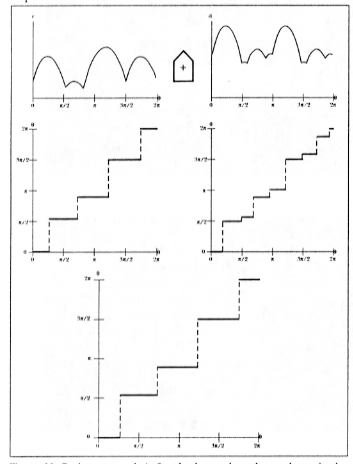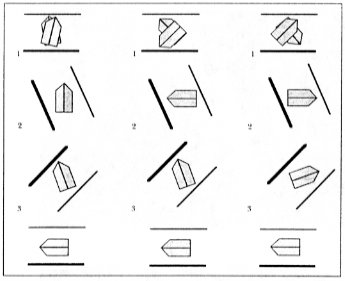Assumption 6 (that both jaws make contact simultaneously) can be relaxed by
considering the class of actions where one jaw intentionally pushes the
part prior to grasping. Brost [2] refers to such actions as push-grasp actions. Given sufficient pushing distance
[16], the part rotates so that one edge is aligned
with the pushing jaw with probability 1. After the second jaw makes
contact, the part's motion can be predicted using the squeeze function as
before. In addition to a more realistic model of mechanics, pushing can
eliminate the ambiguity in the part's final orientation that is
inherent with pure squeeze actions.
To analyze the mechanics of push-grasping we need one additional piece of information, the part's center-of-mass. A result due to Mason says that the part's rotation is determined by a vector from the point where the jaw makes contact with the part to a point at the part's center-of-mass. The mechanics of pushing is captured with a radius function [12].
As with squeeze-grasping, the transfer function for push-grasping is a monotonically non-decreasing step function on the space of planar rotations. Since this is the only assumption required by the planning algorithm, we can use the same algorithm to plan optimal push-grasping strategies. We have implemented this variation and tested the resulting plans. An example is shown in Figures 11, 12, and 13.

Figure 11: Push-grasp analysis for the house-shaped part shown in the center. In the upper left is the radius function. Directly below is the push function. In the upper right is the diameter function. Directly below it is the squeeze function. The push-grasp function is shown at the bottom.

Figure 12: Three traces of push-grsp plan for house-shaped part. Darkened line indicates pushing jaw.

Figure 13: Photos of the gripper performing the push grasp. Part motion corresponds to the left-most trace in Figure 12.